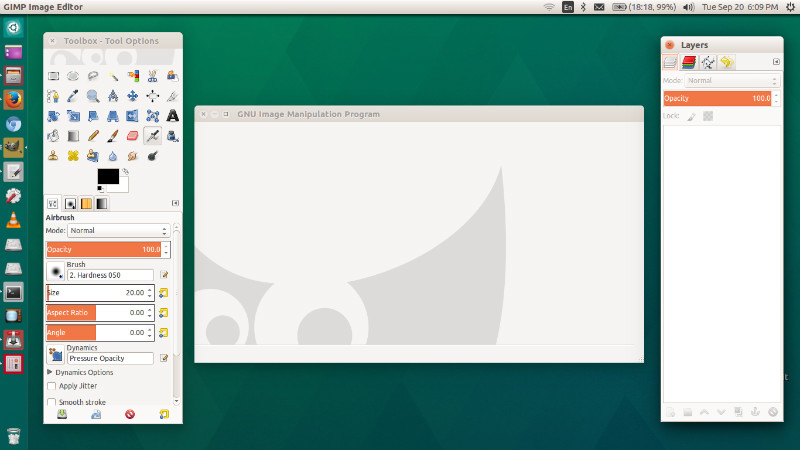Gimp Install Separate Windows
Contents.Extracting plugin packages Almost every plugin you download will come in a package. You need to extract this package.ZIP files can be extracted easily in Windows and GNU/Linux with the utilities included with your OS. Windows includes ZIP support by default.

Most (if not all) GNU/Linux distributions include, which can be used to decompress ZIP files, along with a GUI frontend, such as File Roller for GNOME and Ark for KDE.RAR files are compressed using a proprietary format. Is the original tool for RAR, available for many platforms, WinRAR has a trial period BUT the trial period never ends so you can have the software forever for free. There are alternatives. The free software (as in freedom) can unpack RAR files that do not use RAR 3.0 or later. If RAR 3.0 is needed, taking a newer CVS snapshot may work, which has been done for the unrar-free Debian and Ubuntu packages.

The program includes support for RAR 3.0, but the RAR component is proprietary.TAR.GZ and TAR.BZ2 files are compressed archives originating from GNU/Linux. It is a double extension. The 'GZ' or 'BZ2' section refers to the fact the compression method is gzip or bzip2. Gzip and bzip2 can only compress single files, however, so a program like tar is used to merge the files/folders into one file, hence the 'TAR' section of the name. On GNU/Linux, the original tools can be used, usually 'tar -xvzf file.tar.gz' (TAR.GZ) or 'tar -xvjf file.tar.bz2' (TAR.BZ2). On Windows, the free 7-Zip can be used.7z files can be done in Windows with 7-Zip, and in GNU/Linux, if the p7zip utility is installed, Ark and File Roller will work, along with the p7zip command directly.If you find any other file types, a quick search on the internet will help. On the Windows platform, is a piece of software that will extract most file formats, while on GNU/Linux, most free are bundled with the OS and others usually can be found in your package manager.Copying the plugin to the GIMP plugin directory Open up the folder containing the plugin.
Now, copy the files to the clipboard (Select the files, right click one and press copy)Windows On Windows, go to the folder GIMP is installed in (usually somewhere in Program Files). Once in the GIMP main folder navigate to libgimp.version. where as.version. represents the version of Gimp.
Then double click the 'plug-ins' folder. Not all plugins will run in Windows if the OS is 64bit.To install a script (ends in '.scm') navigate to sharegimp.version. Then double click the 'scripts' folder, and paste.Linux On Linux, you might need to read the manual at the official site first under the section:'1.3. Installing New Plugins'Plugins may be stored in different locations depending upon your distribution.Locally installing plugins are easiest because they will usually be stored in a hidden folder under $HOME/.gimp-. (where you should replace $HOME with path to your home catalogue and gimp-.
Gimp Install Separate Windows Download
with the version you use (for example 2.6). In this case, however, the plugins you install will only be available to the user who installed them, which may not be what you want.If you want to install plugins globally, you might have to look around a bit more. Some boxes will have plugins stored at /opt/gnome/lib/gimp/2.0/plug-ins/ (change lib to lib64 if you've got a 64bit OS), others /usr/lib/gimp/2.0/plug-ins/ (change lib to lib64 if you've got a 64bit OS. Running ' $whereis gimp' (or ' which gimp') in a terminal might help. For example, if the output was /some/place/bin/gimp, then you could check the /some/place/lib (or lib64 if you've got a 64bit OS). In Ubuntu, plugins are located at /usr/share/gimp/2.0/ for both 32 and 64bit. Note that you have to be root to access these files.Ubuntu Linux Steps to install GIMP scripts / plugins.
Download the relevant GIMP script from the GIMP plug-in registry. Each GIMP script is available in two formats namely – Script-Fu (.scm) and Python script (.py).

You can choose to download either one of them but not both. If you are downloading the Script Fu file, then it should be saved in GIMP scripts folder. If you are downloading the Python file, it should be saved in the GIMP plug-ins folder. Let’s assume we have downloaded the python script for the sake of this example. Save the downloaded python script into the GIMP plug-ins folder. In Ubuntu, it is in the directory /usr/lib/gimp/2.0/plug-ins/How did I find the correct directory, you ask?
I opened a terminal and ran the following command:$ dpkg -L gimp grep plug-insOf course, there is another way of finding the GIMP plug-ins folder which is, start GIMP and open “GIMP Preferences” dialog.